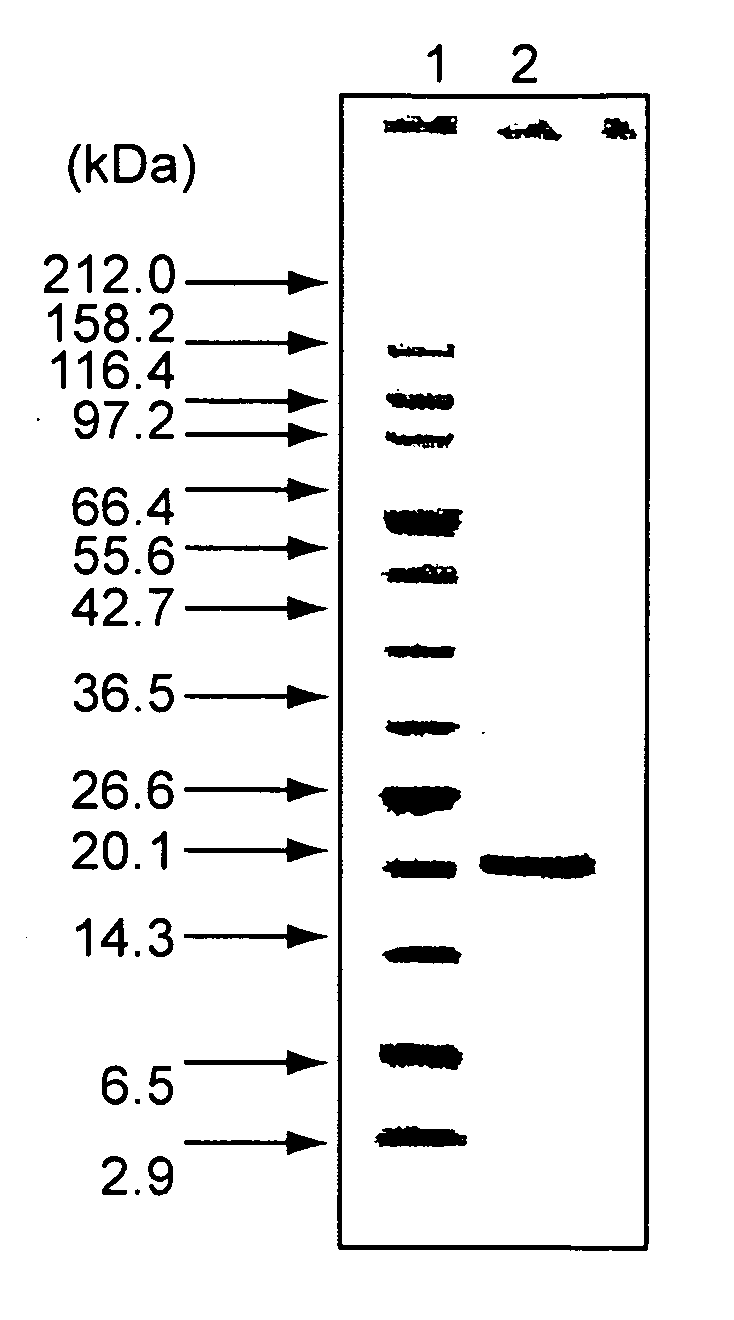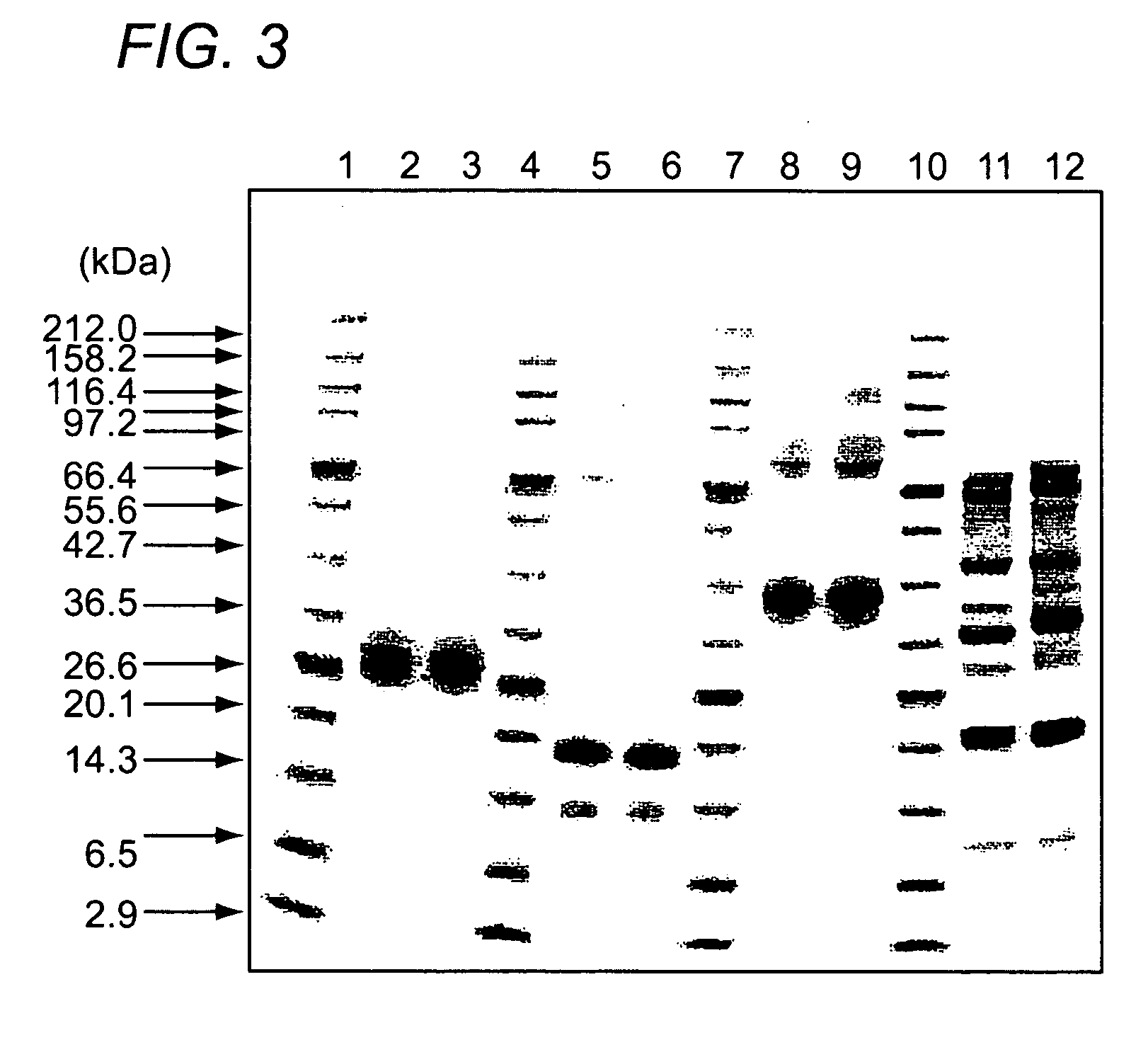Novel protein-deamidating enzyme, microorganism producing the same, gene encoding the same, production process therefor, and use thereof
a technology of protein deamidation and enzyme, which is applied in the field of new enzyme, can solve the problems of non-specific reaction, difficulty in completely restricting the cutting of peptide bonds, and deamidation occurring, and achieve the effect of improving the functionality of food containing and improving the functionality of plants
- Summary
- Abstract
- Description
- Claims
- Application Information
AI Technical Summary
Benefits of technology
Problems solved by technology
Method used
Image
Examples
example 1
Screening of Protein-Deamidating Enzyme Producing Strain
[0160]a) Enrichment culturing: Each of 320 soil samples was inoculated into 5 ml of medium A containing Cbz-Gln-Gly as the sole nitrogen source and cultured at 30° C. for 6 days on a shaker. A 50 μl portion of the culture medium was inoculated in fresh medium A and again cultured at 30° C. for 3 days on a shaker. The culture broth was spread or streaked on a nutrient medium, and the grown bacterium or fungus was isolated as a single colony.
[0161]b) Plate selection: The thus obtained colonies were replicated on an agar medium comprised of the medium A and agar and cultured at 30° C. for 6 days, and the thus grown strains (150 bacterial strains and 294 fungal strains) were picked up.
[0162]c) Check of protein-deamidating enzyme productivity: Each of these strains was inoculated into a lactose liquid medium and cultured at 30° C. for 2 to 7 days on a shaker, and the culture broth was centrifuged to obtain culture supernatant. When ...
example 2
[0163]From the 50 bacterial strains and 85 fungal strains obtained in Example 1, one strain (No. 9670) was selected to carry out the following test. As described in the specification, this was identified as a strain belonging to the genus Chryseobacterium.
[0164]Chryseobacterium sp. No. 9670 was cultured on a shaker at 25° C. for 64 hours using the aforementioned LB Base medium. Time course of the culturing is shown in Table 4.
TABLE 4Culture time(h)pHGrowthEnzyme activity (U / ml)188.24++0.116408.65+++0.224649.41+++0.201
example 3
[0165]From the 50 bacterial strains and 85 fungal strains obtained in Example 1, one strain (No. 9671) was selected to carry out the following test. This was also identified as a strain belonging to the genus Chryseobacterium. Chryseobacterium sp. No. 9671 was cultured in the same manner as described in Example 2. Protein-deamidating activity in the culture medium is shown in Table 5.
PUM
| Property | Measurement | Unit |
|---|---|---|
| pH | aaaaa | aaaaa |
| temperature | aaaaa | aaaaa |
| temperature | aaaaa | aaaaa |
Abstract
Description
Claims
Application Information
 Login to View More
Login to View More - R&D
- Intellectual Property
- Life Sciences
- Materials
- Tech Scout
- Unparalleled Data Quality
- Higher Quality Content
- 60% Fewer Hallucinations
Browse by: Latest US Patents, China's latest patents, Technical Efficacy Thesaurus, Application Domain, Technology Topic, Popular Technical Reports.
© 2025 PatSnap. All rights reserved.Legal|Privacy policy|Modern Slavery Act Transparency Statement|Sitemap|About US| Contact US: help@patsnap.com



